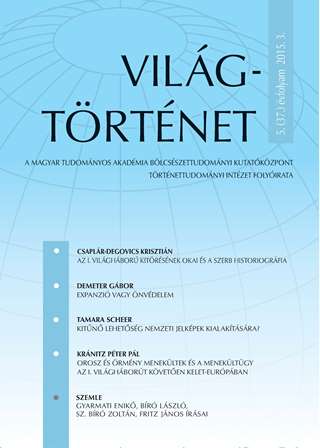Kitűnő lehetőség nemzeti jelképek kialakítására?
The Perfect Opportunity to Shape National Symbols?
Austro–Hungarian Occupation Regimes During the First World War in The Adriatic and the Balkans
Author(s): Tamara ScheerSubject(s): Pre-WW I & WW I (1900 -1919)
Published by: Magyar Tudományos Akadémia Bölcsészettudományi Kutatóközpont Történettudományi Intézet
Keywords: First World War; Serbia; Montenegro; Albania; cultural symbols; bureaucratic system
Summary/Abstract: Austria–Hungary incorporated parts of the Balkans and the Adriatic coast where it had long faced the Ottoman Empire only to have the Ottoman opposition replaced by Italy, Russia, and Serbia during the nineteenth century. Austria–Hungary occupied Montenegro as well as parts of Serbia and Albania during the First World War. In the occupied countries its army sought to counter enemy influence, especially that of Russia and Italy. In enemy states such as Serbia and Montenegro, Habsburg authorities introduced bans on some cultural symbols, including the Cyrillic alphabet. In Albania, which was classified as an occupied friendly state, the Habsburg occupiers supported Albanian culture to diminish Italian influence, including for example the changing of place names. The article shows that even when the occupier held administrative authority, measures it enacted could fail. The primary reason for failure was not purely political but lay rather in the fact that the measures endangered the smooth functioning of the occupation regimes’ bureaucratic system.
Journal: Világtörténet
- Issue Year: 2015
- Issue No: 3
- Page Range: 419-436
- Page Count: 18
- Language: Hungarian

